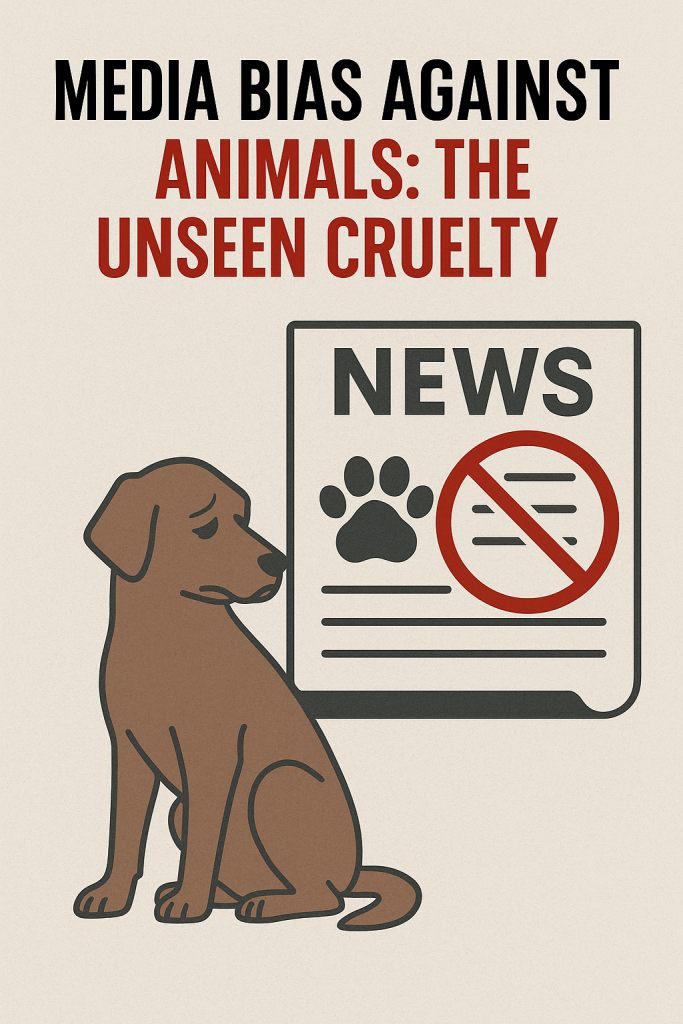In the world of journalism, there’s an unspoken hierarchy of whose pain is worthy of attention. Tragically, homeless animals fall at the bottom of that list.
Time and again, the media fails the voiceless. Acts of extreme cruelty against animals go largely unnoticed. When a stray is beaten, poisoned, maimed, or quietly disappears from a locality, newsrooms remain silent. There is no outrage, no primetime debates, no reporters chasing down the perpetrators. Why? Because these stories don’t bring TRPs. Homeless animals don’t watch television. They don’t read newspapers. And in a world driven by viewership and sensationalism, they simply don’t count.
But when an animal, out of fear or pain or provocation, retaliates—suddenly the spotlight turns on.
One bite, one scratch, one rare incident of aggression is enough to trigger a media circus. Headlines scream “Stray Attack!” or “Wild Animal Threat!”, triggering public fear and anger. No one asks why the animal acted the way it did. Was it starving? Was it provoked? Was it defending its young?
Once the story breaks, the consequences are often tragic. Mob retaliation. Poisonings. Brutal killings. Animals get rounded up, beaten, or dumped far away in unfamiliar, barren places with no food or water. And the media? They’ve already moved on to their next ratings booster.
A Broken Narrative
Media’s silence on animal cruelty is not just negligence—it’s complicity.
- Where are the stories about illegal dog fights?
- About puppies burned alive in plastic bags?
- About injured cows dying by the roadside as people walk past?
You won’t find them trending. Because TRPs dictate compassion now. Editors teach their teams to chase drama, not justice. Sensationalism sells. Suffering—unless it makes people panic—doesn’t.
The Double Standard
Humans cause unimaginable suffering to animals every single day—abandoning pets, mutilating strays, encroaching forests, exploiting creatures for entertainment. Yet media rarely dares to hold people accountable for human cruelty. But the moment there’s even a single act of self-defense by an animal, it’s painted as a menace.
This double standard is sickening. It enables violence. It conditions society to view animals as dangerous liabilities rather than sentient beings with feelings and needs. It turns public opinion against the vulnerable—those who cannot speak for themselves.

Where Is the Journalism That Cares?
It’s time for media houses to introspect.
Journalism was never meant to serve only the powerful. It was meant to speak truth to power, to uplift the voiceless, to protect the innocent. Today, animals need that kind of journalism more than ever.
We urge reporters, editors, and media executives to:
- Report cruelty when it happens.
- Educate the public about animal behavior and needs.
- Highlight the heroes—the rescuers, feeders, and volunteers.
- Hold people accountable for crimes against animals.
- Use media as a force for empathy, not fear.
Because animals are not just stories when they bite. They are stories even when they suffer.
Written in protest, with compassion and fury.
For the voiceless.
For the strays.
For the truth.

